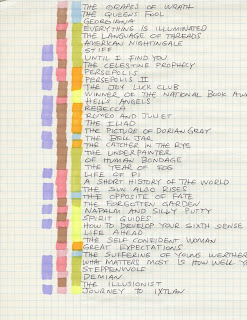To build an improbable monument,
and introduce a new form of burial and commemoration of
life for humans, which acknowledges our past, while maintaining a rational view
of necessary changes in burial processes for the future.
A tall, clear, pyramidal-shaped structure
to fill with ashes;
A "Collective crematorium".
Will include a doorway to step inside,
glass walls, and a small opening at top that plummets down to let light in.
Reminiscent of Egyptian pyramids and
Aztec temples.
Loved ones can include small momentos in
with ashes (colored glass bottles, messages, shells, seeing eye glasses..),
which may be seen due to clear outer shell and natural light source.
BUILDING IT
•Materials: Glass, symbolic of physical body as dust/
transient. Possible physical/human glue
to bond glass together
***HUMAN ADHESIVE POSSIBILITES
http://tisseel.com/us/index.html
http://articles.philly.com/1987-03-19/news/26223354_1_glue-fibrinogen-middle-ear
http://www.ncbi.nlm.nih.gov/pubmed/2440358
***HUMAN ADHESIVE POSSIBILITES
http://tisseel.com/us/index.html
http://articles.philly.com/1987-03-19/news/26223354_1_glue-fibrinogen-middle-ear
http://www.ncbi.nlm.nih.gov/pubmed/2440358
•Brick: Under the earth, to support glass structure,
create catacombs, various chambers
FORMS OF BURIAL
Norse- ship burial
Barrows- circular mounds of earth and
stone
Burial
at sea
ALTERNATIVE BURIAL
•Death
of Animals
•Waste
disposal
•Maintaining
Dignity
and Respect
•Tissue
Digestion aka Water Reduction
•Human
Compost Movement
BIBLIOGRAPHY
•Stiff by Mary Roach
The Meaning of Masonry by
W.L. Wilmhurst









































